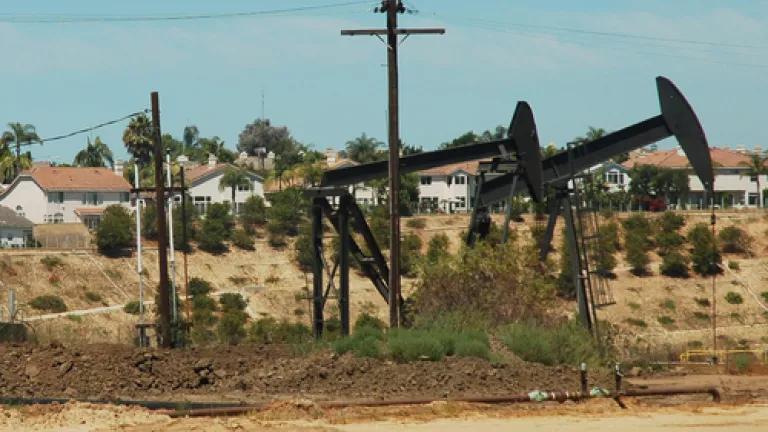8 Ways that California and China Can Work Together to Reduce Pollution and Protect the Climate
I was delighted to see that California Governor Jerry Brown has made climate change and environmental protection a key focus of his visit to China this week. In addition to discussing with China's Premier Li Keqiang the importance of collaboration between California and China on renewable energy and climate change, Governor Brown:
- Signed a landmark agreement with China's Ministry of Commerce and six Chinese provinces and regions to expand trade and investment, particularly in the sectors of new energy, environmental protection and infrastructure;
- Signed an agreement with China's Ministry of Environmental Protection to strengthen and coordinate efforts to improve air quality;
- Met with the head of China's most powerful government agency, the National Reform and Development Commission (NDRC), which is in charge of China's climate change programs; and
- Hosted a roundtable with US and China NGOs to brainstorm possible areas of bilateral cooperation in energy efficiency.

Governor Brown and Ministry of Commerce Sign Trade Agreement
In the next few days, the Governor will also convene a California-China Sustainable Urban Planning Forum in Shanghai, sign an agreement with Guangdong Province to exchange experiences on cap and trade programs, and extend California's cooperation with its sister province ofJiangsu on clean energy and environment.
On first blush, these agreements might appear to be largely ceremonial since they are nonbinding and subject to the availability of resources on both sides. But given California's longstanding climate leadership, China's enormous investment in clean energy, and the renewed focus of China's new leadership on environmental issues, both sides have a great deal to gain from cooperation. And these agreements actually kick up to a new level the environmental and climate coooperation that has already been taking place between California and China for a number of years.
One of the chairs of the NGO roundtable, California Energy Commissioner Robert Weisenmiller, is on the Leadership Council of NRDC’s sister organization, the China-U.S. Energy Efficiency Alliance, which is based in San Francisco. NRDC and the Alliance have worked for many years to bring California’s energy efficiency expertise to China at the request of provincial and national government leaders. For example, in 2004 we worked with China’s national government and Jiangsu Province to help launch China's first large-scale energy efficiency pilot program in Jiangsu, based on the California model. In 2005, we helped broker and implement an agreement on Demand Side Management (DSM) cooperation between the California Public Utilities Commission, the California Energy Commission, and the Jiangsu Economic and Trade Commission. These two achievements later paved the way for another breakthrough in late 2009 when California and Jiangsu Province established the first subnational agreement for cooperation in reducing greenhouse gas emissions through energy efficiency and renewable energy. These and other efforts culminated in 2010 with a decision by China’s central government to enact national energy efficiency regulations that require China's electricity companies to invest in energy efficiency programs for their customers.

Signing Ceremony between Jiangsu Economic & Trade Commission and NRDC
To keep the bilateral cooperation going strong, the Alliance will be hosting a roundtable this May with industry leaders, NGOs, academics, and government decision-makers to examine business possibilities in China as well as the successes and challenges of doing business in the energy efficiency field. And later this fall, the Alliance will arrange for a trade mission involving California businesses to meet with officials and companies in China that are ready to move forward on energy efficiency projects, particularly in the designated pilot DSM cities.
I am very proud to have witnessed the sustained effort, the growing partnerships, and the incredible progress China and California have made over the years. Just a few months ago, California once again launched ground-breaking program on cap and trade. This is one part in a series of steps that California is taking to reduce pollution from the state’s largest emitters and to build a clean energy future that creates jobs and saves consumers money. It could set an example for the rest of the U.S. to follow as well as for China to study as it considers a suite of its own policy measures, including a carbon tax, carbon trading and a coal consumption cap, among others.

Here are eight ways that California and China can work together to reduce pollution and protect the global climate:
1. Cleaner Fuels: Powering cars and trucks with cleaner fuels can clean the air, reduce greenhouse gas emissions and enhance energy security. China has pledged to adopt cleaner fuel standards that will take effect by 2017. California’s path-breaking Low Carbon Fuel Standard requires a 10 percent reduction in the carbon content of fuels by 2020.

White House directs EPA to work with California to issue new set of greenhouse gas and fuel economy standards during Rose Garden Ceremony
© Rich Kassel
White House directs EPA to work with California to issue new set of greenhouse gas and fuel economy standards during Rose Garden Ceremony © Rich Kassel
2. Sustainable Communities: Designing communities to enable people to walk, bike, or take public transit to get to more of the places they want to go can both significantly reduce pollution and improve the quality of life. California's model law promoting sustainable communities, known as SB 375, is a key part of its climate change strategy. China is developing hundreds of new sustainable cities, but does not yet have any widely accepted benchmarking standards for such development.
3. Energy Efficiency: Efficiency efforts since the 1970s have saved Californians over $65 billion, helped make household electricity bills 25 percent below the national average, and avoided at least 30 power plants – these savings are now preventing annual climate-warming carbon pollution equivalent to emissions from 5 million cars. Thanks in part to California’s comprehensive efficiency efforts, the state has kept per capita electricity consumption nearly flat over the last 40 years while the rest of the U.S. increased by over 50 percent. China has made significant progress in energy efficiency but still requires twice as much energy to produce one unit of GDP as the world average. Enormous opportunities still remain in both California and China to save energy more cheaply than it can be produced.
4. Renewable Energy: In 2011, California adopted America's strongest renewable energy standard, requiring utilities to supply one-third of their power from clean sources by 2020. Together with policies to promote clean distributed generation, this is helping spur the rapid growth of the clean energy industry, and helping protect Californians from volatile fossil fuel prices. China, the world's largest investor in renewable energy, leads the world in wind power capacity and solar hot water heating, and has set ambitious renewable energy targets for 2020 (including 200 GW of wind power and 50 GW of solar power), but still faces technical, economic and regulatory hurdles in increasing its utilization of renewable resources.
5. Cleaner Power Plants: California adopted a model policy to ensure that any long-term investments utilities make on behalf of their customers go to cleaner and more efficient power plants. Since power plants often last for thirty years and longer, this law, known as SB 1368, ensures that California won't saddle future generations with expensive and polluting power plants. Last month, the city of Los Angeles adopted a definitive plan for getting off coal by 2025. China is also exploring ways to reduce its reliance on coal, which currently provides 70 percent of China's energy and 80 percent of its electricity. Several Chinese cities and regions are piloting the use of a cap on total coal consumption, which we hope will become a binding national coal cap in the next five-year plan (2016-2020).
6. Green Ports: California is a world leader in efforts to reduce pollution from ports and shipping, a key source of dirty diesel emissions. The ports of Los Angeles and Long Beach were the first green ports in the world, and have become a model for many other countries. Marine emissions are the leading source of sulfur dioxide, nitrogen oxide and particulate pollution in Hong Kong, which has pledged to enact legislation requiring at-berth fuel switching to low sulfur fuel. Hong Kong has also begun discussions with the neighboring ports of Guangzhou and Shenzhen to develop a regional approach, including the possibility of seeking designation as a regional Emission Control Area by the International Maritime Organization.
7. Regional Air Pollution Control: Although Beijing has already enacted some of the most advanced clean energy policies in China, it continues to suffer from hazardous levels of air pollution, in part because much of its pollution comes from neighboring provices, some of the most coal-dependent regions in the world. Although China is considering amendments to its Air Pollution Law that would address this problem, it currently has no regulatory structures in place to address air pollution on a regional basis. NRDC recently invited one of the top regulators from the Southern California Air Quality Management District to share her experiences in combating Los Angeles' infamous smog through a regional management approach.
8. Cap and Trade Programs: California's cap and trade program puts a price on carbon pollution and holds the state’s largest emitters accountable. In China, seven Chinese cities and provinces have been developing pilot programs for carbon emissions trading, with the first city, Shenzhen, planning to begin emissions trading on June 17th.
China is looking for partners with the technology and policy expertise to help them put these programs in place, while California is looking to boost business opportunities while sharing their climate and clean energy experiences. But the most important experience that California has to share may be one that is not mentioned in any of the agreements that Governor Brown is signing this week. When NRDC and the Alliance brought a crew from China's Central Television to California a few years ago to film a documentary on California's energy efficiency efforts, the crew was stunned by the pure fresh air. "So that's what it's all about!" said one of the film's producers. "Now I understand what we're fighting for in China!"
This post was coauthored by my colleagues Christine Xu and Devra Wang.
Note: This post has been updated with additional photos and details since first being published.



